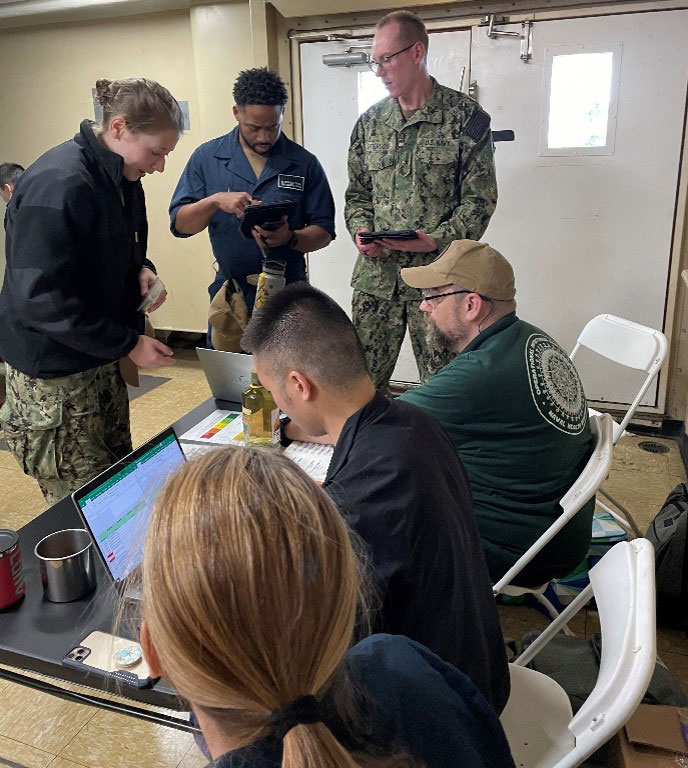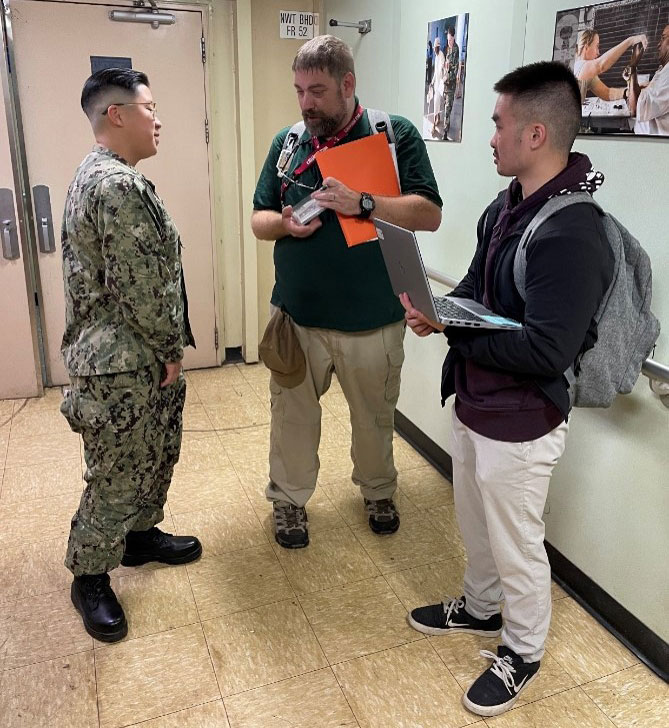New OWL Tool Seeks to Improve Sleep Patterns, Boost Readiness

Following a successful test run on the USS Shoup, a new fatigue management tool funded by the U.S. Army Medical Research and Development Command is scheduled for placement on more than a dozen additional Navy vessels in the coming year.
The device, called the Optimized Watchbill Logistics tool, is funded chiefly by USAMRDC'S Military Operational Medicine Program, and stands as just one part of the U.S. military's increasing investment in the collection of real-time biometric health data in order to benefit the overall welfare of Service Members.
"The goal of the entire OWL project is to make leadership aware of potential areas of fatigue risk," says Dr. Malena Rone, who manages the Joint Fatigue Mitigation and Countermeasures Research Portfolio at MOMRP. "Everything comes down to operational risk management; leaders need be informed in real-time of fatigue-related risk, and so we are striving to provide a robust tool to help mitigate such risks and also to enhance operational safety for our nation's Warfighters."
At its most basic level, the OWL tool organizes a group of Sailors' tasks for any given day and week. The tool reviews each Sailor's work, watch and sleep schedules and then develops new schedules based on circadian rhythms and unique fatigue prediction scores for each individual person. The OWL tool then generates dedicated blocks of time where Sailors get so-called "protected" sleep – or, periods of dedicated, uninterrupted rest time. In turn, managers in charge of developing schedules for a ships' crew could make the decision to adjust those schedules (if feasible) based upon the OWL tool's suggestions. Currently, these schedules are organized through basic computer word processing documents and off-the-shelf spreadsheet tools.
Securing proper rest for all Service Members remains a hurdle to readiness. A survey conducted by the federal government in 2020 estimated that 67 percent of all naval officers received five or fewer hours of sleep per day on their most recent deployment. On top of that, a pair of recent studies found that less than one-third of Service Members overall receive the recommended seven-to-eight hours of sleep per day. The OWL tool was originally developed in the wake of the fatal 2017 accidents involving both the USS John S. McCain and the USS Fitzgerald; both ships collided with merchant vessels in separate incidents.
"The OWL tool gives leadership a better understanding of the fatigue readiness of the group," says Elena Wirz, a product manager for the OWL tool at PULSAR Informatics, Inc. "Some of the junior Sailors may not understand the importance of good, quality sleep – or they simply may not pay attention to the importance of sleep. They may not be so willing to voice their concerns to leadership."

A former Surface Warfare Officer with the Navy, Wirz brings a unique perspective to the development of the OWL. Not only did she serve in uniform for five years before starting her career in the private sector last year, Wirz also served on the USS Shoup, where the OWL tool was tested (following an Authority to Operate order) just last month. Her understanding of the scheduling required on such vessels has aided her work on the project.
"It was very important to me that the people who worked under me were well-rested and alert and attentive so they could back me up and accomplish the proper tasks," she says. "They might be trained and they might have the knowledge, but a Sailor may not be fully mentally focused if they're just exhausted."
Initial feedback from the Sailors themselves has been promising. Dr. Dale Russell, the human factors engineer for Naval Surface Force, U.S. Pacific Fleet in Coronado, California, is cautiously optimistic regarding the early data on the OWL tool.
"The only thing I've heard is positive feedback so far, but the OWL tool has only been available for pilot testing for a little over a month – there's much more work that needs to take place," says Russell. "Vice Adm. [Roy] Kitchener, commander of U.S. Naval Surface Forces, has made addressing crew endurance a priority to ensure that the needed work gets accomplished."
More data is indeed incoming. Sixteen more Navy guided-missile destroyers are scheduled to receive the OWL tool this year. Additionally, the Command Readiness, Endurance, and Watchstanding program – which is also funded by MOMRP and jointly-operated by the Naval Health Research Center and CNSF – is assessing whether individual biometric data collected using wearable devices can enhance fatigue risk predictions within the OWL tool. The integration of that data occurs using secure data hubs that automatically transfer biometric, fatigue-related data when Sailors come into close proximity of a CREW hub. The CREW/OWL integration will be tested in several of the ships receiving the OWL tool this year.
"Wearables may be an ideal way to automatically relay when changes occur to personnel schedules during underway operations, something that occurs often and may be due to a number of reasons including personnel pulled to perform unplanned maintenance or cover in the event others become sick or injured," says Dr. Rachel Markwald, the NHRC principal investigator for the CREW program.
Rone agrees, noting that the OWL tool – along with the CREW program, too – affords the military substantial and burgeoning opportunities to aid the future health and well-being of Service Members.
"Wearables can bring a greater level of granularity," says Rone. "Wearable data combined with data from the OWL tool will give a much more individualized and comprehensive picture of what the fatigue risk looks like within a ship's crew."














